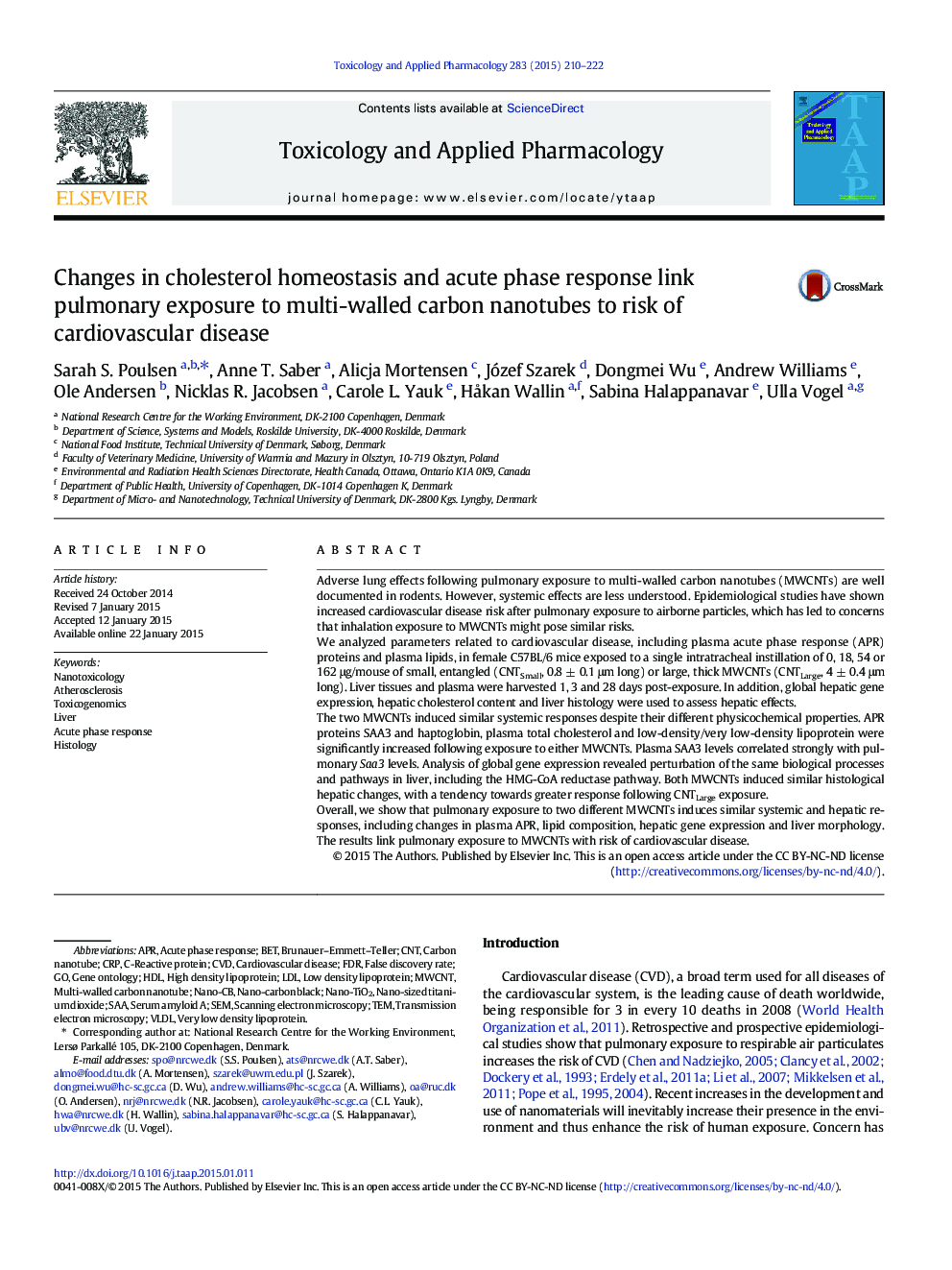| کد مقاله | کد نشریه | سال انتشار | مقاله انگلیسی | نسخه تمام متن |
|---|---|---|---|---|
| 5846056 | 1128449 | 2015 | 13 صفحه PDF | دانلود رایگان |
• Systemic and hepatic alterations were evaluated in female mice following MWCNT instillation.
• Despite being physicochemically different, the two MWCNTs induced a similar systemic acute phase response.
• We found a close correlation between plasma SAA levels and pulmonary Saa3 transcription levels.
• Similar changes in plasma lipid levels and in the hepatic transcriptome were observed.
• Our results indicate a link between pulmonary exposure to MWCNTs with risk of cardiovascular disease.
Adverse lung effects following pulmonary exposure to multi-walled carbon nanotubes (MWCNTs) are well documented in rodents. However, systemic effects are less understood. Epidemiological studies have shown increased cardiovascular disease risk after pulmonary exposure to airborne particles, which has led to concerns that inhalation exposure to MWCNTs might pose similar risks.We analyzed parameters related to cardiovascular disease, including plasma acute phase response (APR) proteins and plasma lipids, in female C57BL/6 mice exposed to a single intratracheal instillation of 0, 18, 54 or 162 μg/mouse of small, entangled (CNTSmall, 0.8 ± 0.1 μm long) or large, thick MWCNTs (CNTLarge, 4 ± 0.4 μm long). Liver tissues and plasma were harvested 1, 3 and 28 days post-exposure. In addition, global hepatic gene expression, hepatic cholesterol content and liver histology were used to assess hepatic effects.The two MWCNTs induced similar systemic responses despite their different physicochemical properties. APR proteins SAA3 and haptoglobin, plasma total cholesterol and low-density/very low-density lipoprotein were significantly increased following exposure to either MWCNTs. Plasma SAA3 levels correlated strongly with pulmonary Saa3 levels. Analysis of global gene expression revealed perturbation of the same biological processes and pathways in liver, including the HMG-CoA reductase pathway. Both MWCNTs induced similar histological hepatic changes, with a tendency towards greater response following CNTLarge exposure.Overall, we show that pulmonary exposure to two different MWCNTs induces similar systemic and hepatic responses, including changes in plasma APR, lipid composition, hepatic gene expression and liver morphology. The results link pulmonary exposure to MWCNTs with risk of cardiovascular disease.
Journal: Toxicology and Applied Pharmacology - Volume 283, Issue 3, 15 March 2015, Pages 210–222
